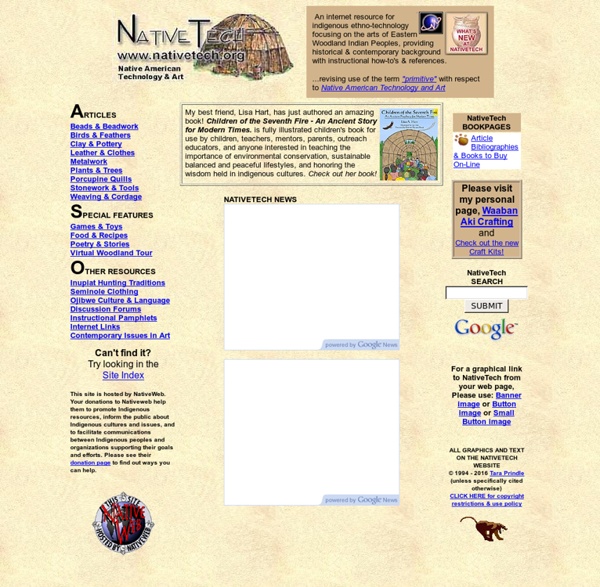



National Museum of the American Indian Native History: The Day Tecumseh’s Prophecy Rocked the World This Date in Native History: Earthquakes and eclipses of the sun were among the deeds attributed to Tecumseh and his brother, but legends surrounding Tecumseh are as great as the truths, said Shawnee Second Chief Ben Barnes. “It is hard to know without proof or specific oral history just exactly what happened” on August 11, 1802 he said. There is evidence that Tecumseh and his brother, Tenskwatawa, were prophets and visionaries who may have changed history had there been a little more help from the British, and more faith from certain tribes. As for help from the Creator, or “Master of Life,” the evidence follows. Tenskwatawa was a victim of the times, with an intense longing for the ways of his childhood and a sense of hopelessness for the future. Fed up with the ever encroaching, land stealing whites, Tecumseh took his brother’s prophecy and called for all Natives to unite as one people against the whites.
Traditional Native American Recipes from the Cooking Post Jerry's Own World Famous True Triumph of the Culinary Art Blue Corn Flapjacks Two eggs 1 1/2 cups milk 1 tablespoon butter 3/4 cup all-purpose flour 3/4 cup Tamaya Blue brand roasted cornmeal 1 1/2 teaspoons baking soda 2 tablespoons sugar 1 teaspoon salt Mix all ingredients in a blender. Let stand for 5 minutes. Wait until bubbles form on top of flapjack then flip artfully with a great flourish and considerable bravado. Remove from grill when second side is cooked. Top of recipe page Jerry's Own World Famous True Triumph of the Culinary Art Blue Corn Scones 1/2 cup Tamaya Roasted Blue Corn Meal 1 3/4 cup all-purpose flour 1/3 teaspoon baking powder 1/4 teaspoon salt 1/4 lb. chilled butter 1/4 cup light brown sugar 1 egg 1/2 milk 1/2 teaspoon vanilla extract Preheat oven to 375 degrees F. Grease & flour a baking sheet Stir the dry ingredients in a bowl then cut the butter into the dry mixture with a pastry blender (or suitable substitute) to form a course meal. Serve steaming hot
Tecumseh Tecumseh (/tɛˈkʌmsə/; March 1768 – October 5, 1813) was a Native American leader of the Shawnee and a large tribal confederacy (known as Tecumseh's Confederacy) which opposed the United States during Tecumseh's War and the War of 1812. Tecumseh has become an iconic folk hero in American, Aboriginal and Canadian history.[1] Tecumseh grew up in the Ohio Country during the American Revolutionary War and the Northwest Indian War, where he was constantly exposed to warfare.[2] With Americans continuing to encroach on Indian territory after the British ceded the Ohio Valley to the new United States in 1783, the Shawnee moved farther northwest. In 1808, they settled Prophetstown in present-day Indiana. During the War of 1812, Tecumseh's confederacy allied with the British in The Canadas (the collective name for the colonies of Upper Canada and Lower Canada), and helped in the capture of Fort Detroit. Family background[edit] Early life[edit] Frontier conflicts[edit] Tenskwatawa[edit]
CRYPTOZOOLOGY CFZ Quanah Parker Quanah Parker (ca. 1845 or 1852 – February 23, 1911) was Comanche/English-American from the Comanche band Noconis ("wanderers" or "travelers"), and emerged as a dominant figure, particularly after the Comanches' final defeat. He was one of the last Comanche chiefs. The US appointed Quanah principal chief of the entire nation once the people had gathered on the reservation and later introduced general elections. Early life and education[edit] Quanah Parker's mother, Cynthia Ann Parker (born ca. 1827), was a member of the large Parker frontier family that settled in east Texas in the 1830s. Nadua and Nocona's first child was Quanah (Fragrance), born in the Wichita Mountains of southwestern Oklahoma. However, another account disputes the birthplace, contending that in 1911 Parker was seen traveling by automobile near Lubbock, Texas, telling observers he was going to visit what he understood to be his birthplace at Laguna Sabinas (Cedar Lake) in Gaines County, Texas.[4] Career[edit]
Researchers find what may be a new state of matter Think way back to elementary or primary school, somewhere around third-grade physical science, when you first learned about the various states of matter. At the time you were undoubtedly told that there were three states of matter: solid, liquid, and gas. Solid is where the atoms are tightly packed into some arrangement and vibrate in place; liquids have more freedom of motion and vibration, allowing them to take on any bulk shape; gas molecules had near complete freedom of motion and rarely saw another molecule. Quasi-particles About ten years ago the Nobel Prize in physics went to a team for their discovery of what they termed quasi-particles. This idea of quasi-particles clearly intrigued people; Xiao-Gang Wen at MIT and Michael Levin at Harvard University began to look at this in further detail. String-nets A very unusual mineral Further studies into the details of the possible entanglement properties of this material are being undertaken now.
The theft of Native Americans' land, in one animated map American society has a remarkably short memory when it comes to past injustices, which is why there are somehow still people who think that Washington's professional football team should continue to be named after "the scalped head of a Native American, sold, like a pelt, for cash." University of Georgia historian Claudio Saunt is looking to correct that, at least in the case of Europeans' violent seizing of Native Americans' land. To supplement his new book, West of the Revolution: An Uncommon History of 1776, Saunt created an interactive map showing the decline of Indian homelands from 1776 to 1887. Along with Slate's Rebecca Onion, he turned that map into a GIF, showing just how rapidly European-Americans took what amounted to over 1.5 billion acres: Source: Rebecca Onion and Claudio Saunt Blue areas were American Indian homelands, red ones reservations.
THE ANOMALIST: World News on UFOs, Bigfoot, the Paranormal, and Other Mysteries at the Edge of Science